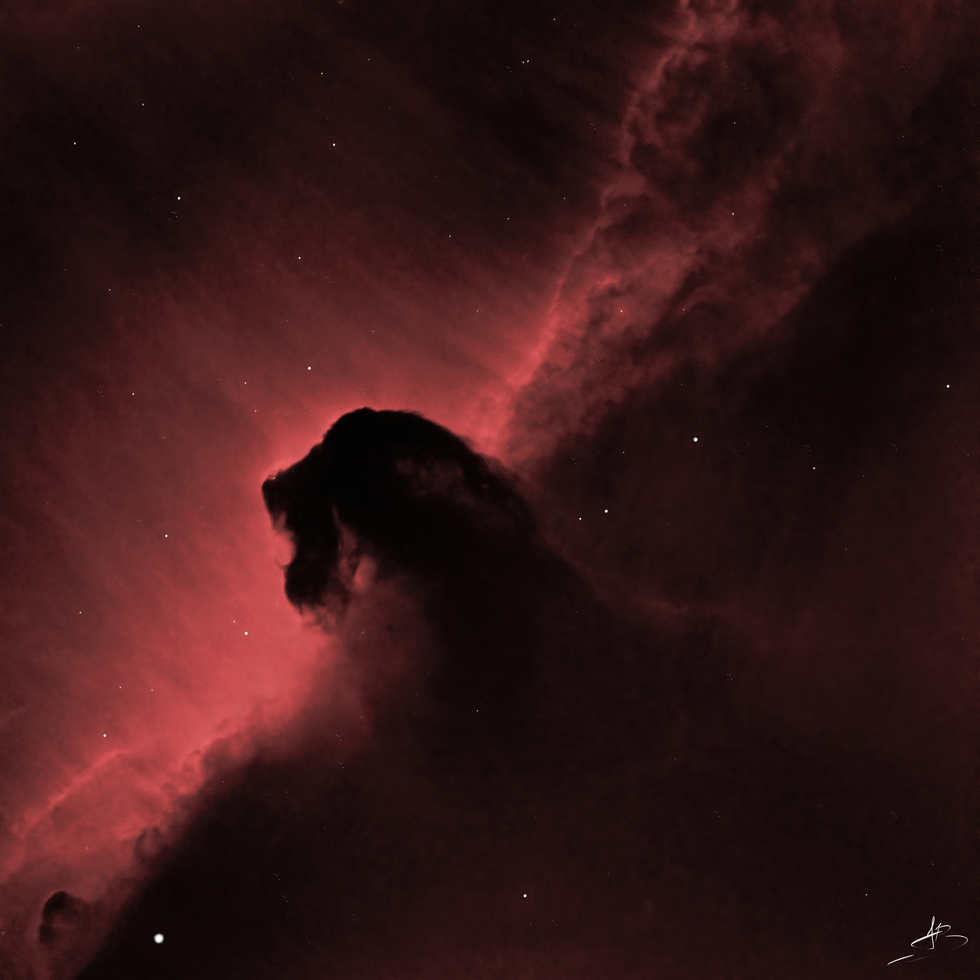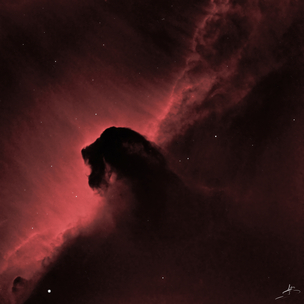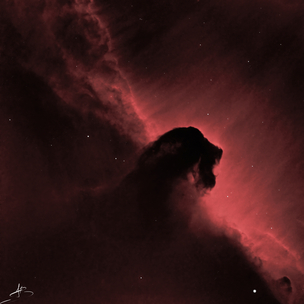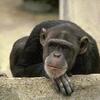IC 434 or Horse Nebula
4
14
IC 434 or Horse Nebula
The IC434 or Horse Nebula is a bright red nebula in the Orion Constellation that has almost no emission in the Oiii spectrum and can be nicely observed with the CHI-3 telescope. The data comes from an advance request set composed of 4x300s Ha exposures and 3x300s Sii and Oii exposures.
The processing used the Ha to generate the main colors with the Sii for adding details and additional tonality. The Oii images have been used solely for the stars.
The data was quite challenging to use. As standard SHO and HSS (or other variants) failed to show the proper tonality, the colors have been generated by mixing colored photo filters with Ha and Sii images. Furthermore, the data itself shows several problems such as rotating stars (typical with the CHI3) as well as misalignment of stars far from the center (unclear for what reason at this moment) which required extensive manipulation with both PixInsight and Photoshop.
The processing used the Ha to generate the main colors with the Sii for adding details and additional tonality. The Oii images have been used solely for the stars.
The data was quite challenging to use. As standard SHO and HSS (or other variants) failed to show the proper tonality, the colors have been generated by mixing colored photo filters with Ha and Sii images. Furthermore, the data itself shows several problems such as rotating stars (typical with the CHI3) as well as misalignment of stars far from the center (unclear for what reason at this moment) which required extensive manipulation with both PixInsight and Photoshop.
SPECIFICATIONS
Telescope
ASA RC-1000AZ
Camera
FLI PL16803
Location
Chile
Date of observation
December 2020
Filters
Halpha, SIII, OIII
Processing
PixInsight, Photoshop, StarNet++, Topaz Denoise AI
Credits
telescope.live
Comments
This is GREAT!
Nice rendition, but isn't it looking the wrong way?
Reply: 2
This is how I received the data. Making straight was a bad idea as I would loose too much data. I tried to rotate and flip it horizontally ... and in the end I decided to leave the orientation the same way the telescope provided it to me.
I will add a variant with the more usual orientation later tonight.
Incidentally, one way (of several...) to get the orientation "right" in PI is just to orientate your reference image for StarAlignment how you would like it to be, using Image => Geometry. The SA process will then do all the necessary flips/rotations (it is very agnostic about global image geometry).
Of course, just as easy to do it in the final image, too :)





